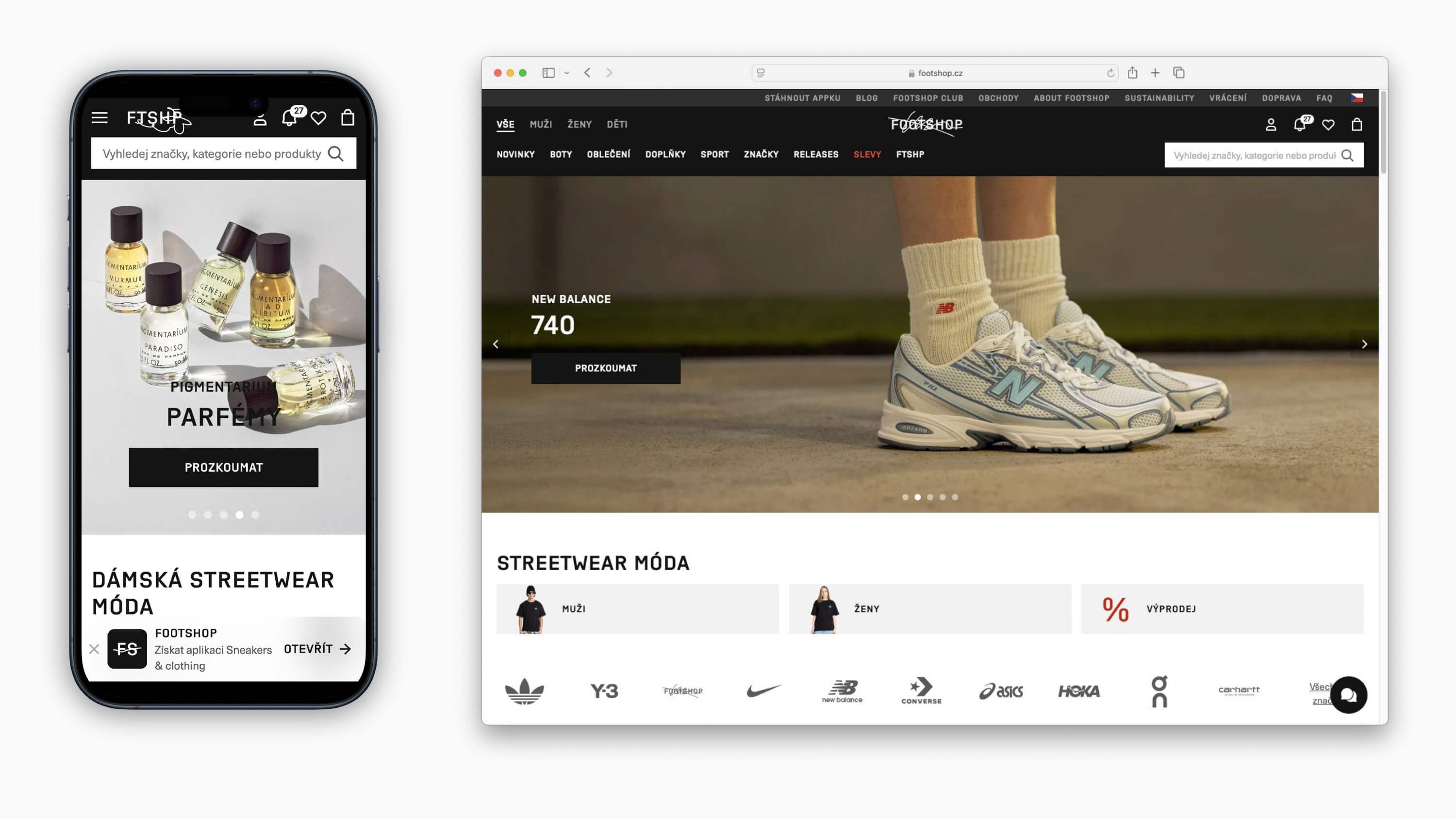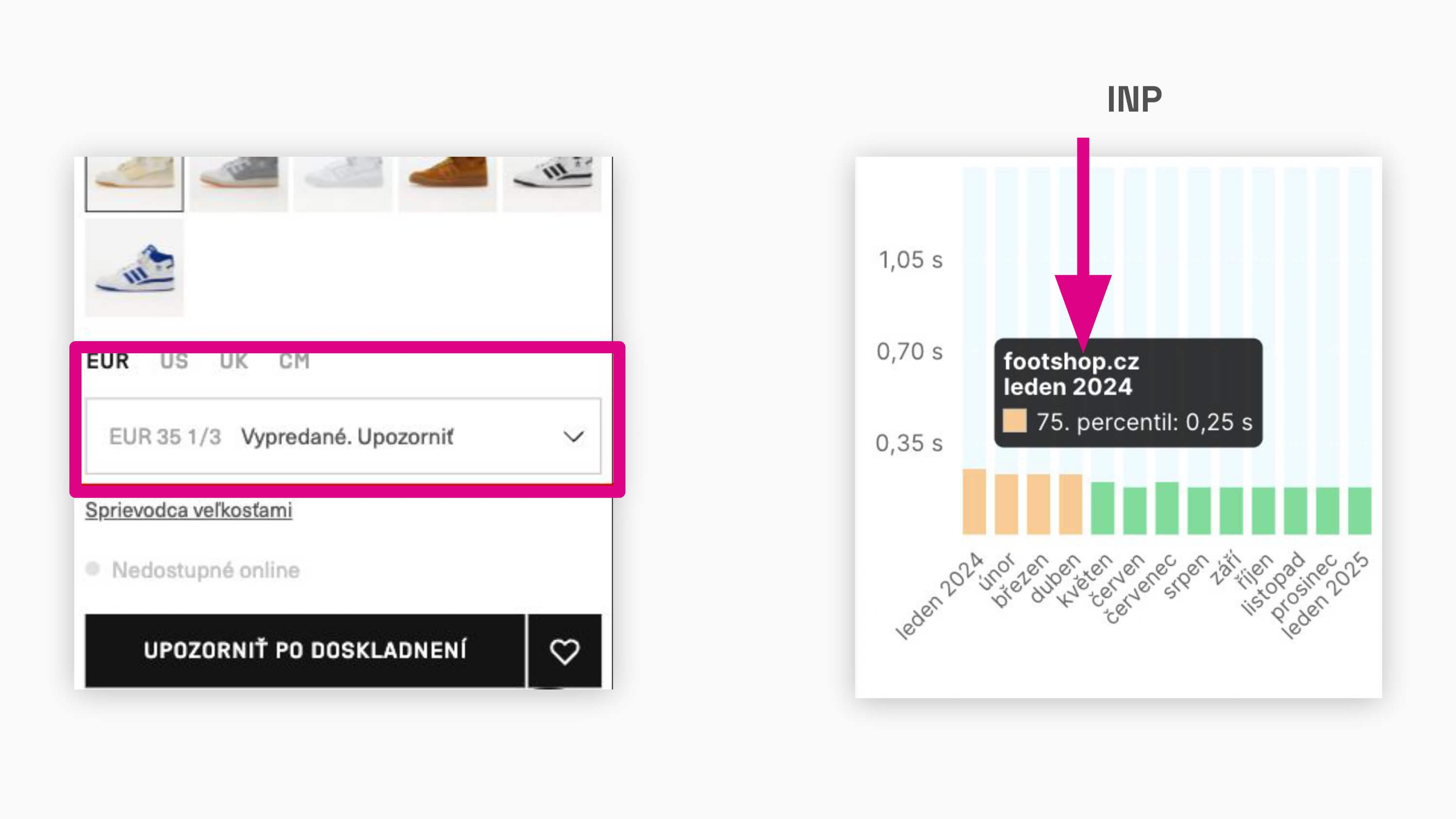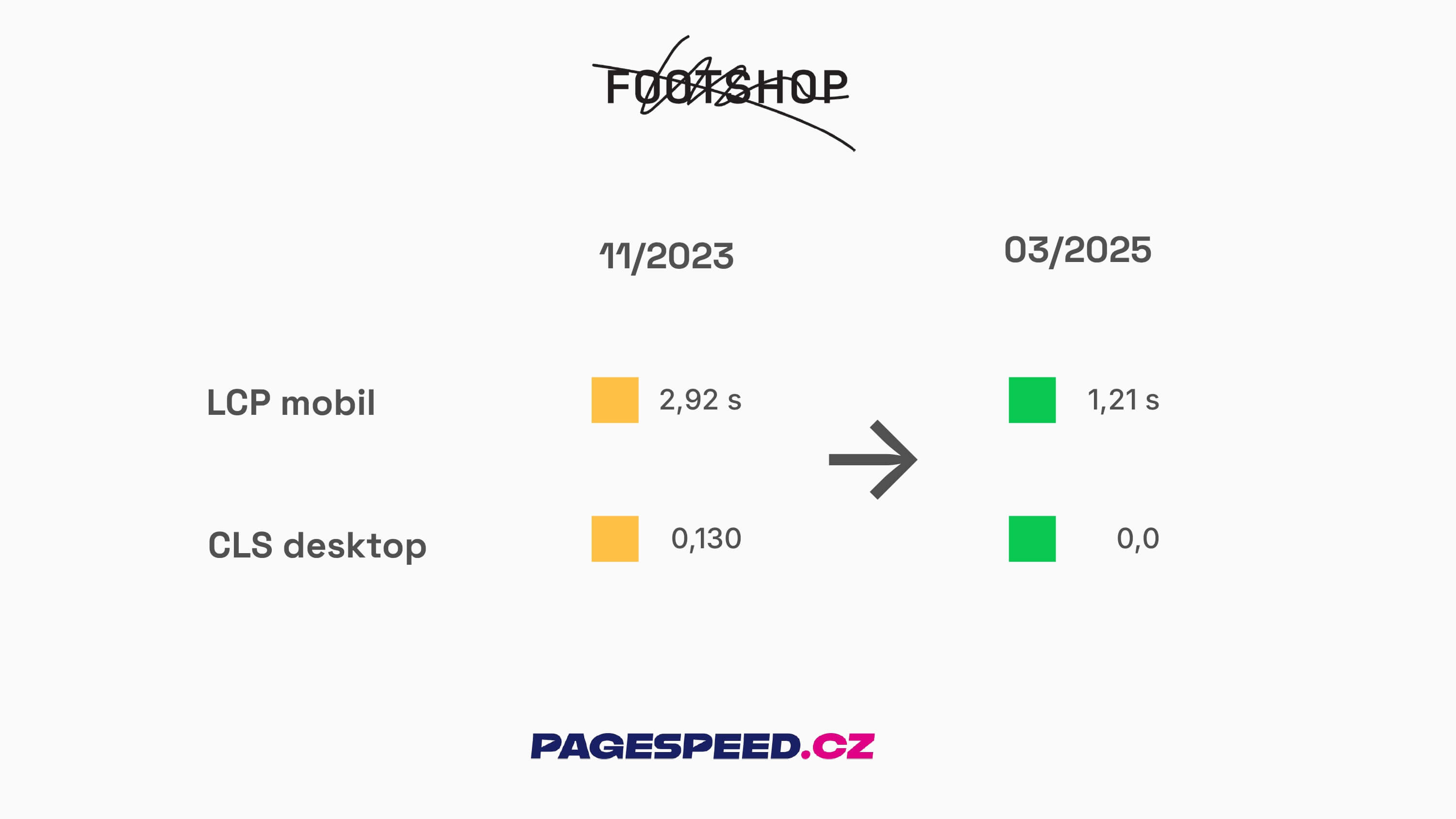Footshop Case Study: 2.5x Faster Loading Speed after a Year and a Half of Collaboration
During our collaboration with Footshop, PageSpeed.ONE significantly accelerated their websites over several months, enhancing the user experience.
Curious about our approach and the results we achieved together?
 Footshop is a brand you can't miss.
Footshop is a brand you can't miss.
Footshop is an e-commerce platform for sneakers and streetwear, operating not only in the Czech Republic but also in Slovakia, Hungary, Romania, and other Central and Eastern European countries. They focus on premium and limited products, building a strong community of fans.
Let's explore how we helped Footshop speed up their websites.
First, we identified the key metrics that mattered most to the client. Our analysis revealed that TTFB (Time to First Byte), CLS (Cumulative Layout Shift), and LCP (Largest Contentful Paint) from the Core Web Vitals set were the priorities.
Optimizing Target Metrics
With analytics set up and quality data in hand, we began optimizing. Since late 2023, we have focused on individual speed metrics based on their priority:
- Backend response time (TTFB) and loading speed (LCP) – Footshop's development team focused on server tuning, while we assisted with frontend performance, optimizing the transition from client-side rendering cached by Service Workers to server-side rendering.
- Improving interaction response times (INP) – In March 2024, Google introduced the INP metric. The interaction response time was not ideal, prompting us to analyze SpeedSprint, resulting in several specific adjustments.
- Tuning unwanted layout shifts (CLS) – The next phase of work at the end of 2024 involved refining the rendering of certain components and reducing CLS metric values.
You can see one example of optimization in the image.
 INP optimization through performance tuning of variant selection on the product detail page.
INP optimization through performance tuning of variant selection on the product detail page.
Collaboration Results: Metrics Improved Several Times Over
We are pleased with the changes in metrics and, most importantly, the user experience.
After about a year and a half of ongoing collaboration, we achieved the following metric improvements:
- Footshop.cz now has 2.5x better loading speed (LCP) on mobile devices.
- The layout shift metric (CLS) improved by more than 8x.
- We enhanced interaction response times (and the INP metric) by 30%.
 Changes in LCP and CLS metrics since the start of collaboration.
Changes in LCP and CLS metrics since the start of collaboration.
What do the people at Footshop say about it?
We enjoy collaborating with Footshop, not just for the brand itself but also for the quality of the entire team and their drive. We are genuinely pleased that the Footshop team values our partnership.
“A great collaboration that brought a skilled partner to our small team (= PageSpeed.ONE team). They provided not only know-how but also specific actionable tips that can be implemented in parts, yielding significant results.”
Jiří Hykel, Frontend Developer
Daniel Urban, CIO of Footshop, adds:
“I appreciate PageSpeed.ONE's quick understanding of web performance and clear communication, even for non-technical people. The greatest benefit is their unique know-how, which would be hard for us to acquire on our own.”
Daniel Urban, CIO of Footshop
Such a successful collaboration in website optimization requires several conditions to be met on both sides. Let's summarize them:
- The client views speed as a crucial part of the user experience and is willing to invest in it, knowing that the investment will pay off.
- Quality measurement is in place, and we have sufficient data. (Here, our monitoring and SpeedCurve RUM)
- Our consultants can actively and intensively communicate with the team, and proposed adjustments receive priority in development plans.
- The collaboration is not a one-time event but operates long-term, allowing us to avoid regression and continuously educate the client's team.
Thank you, Footshop, for the fruitful collaboration so far, and we look forward to its continuation!